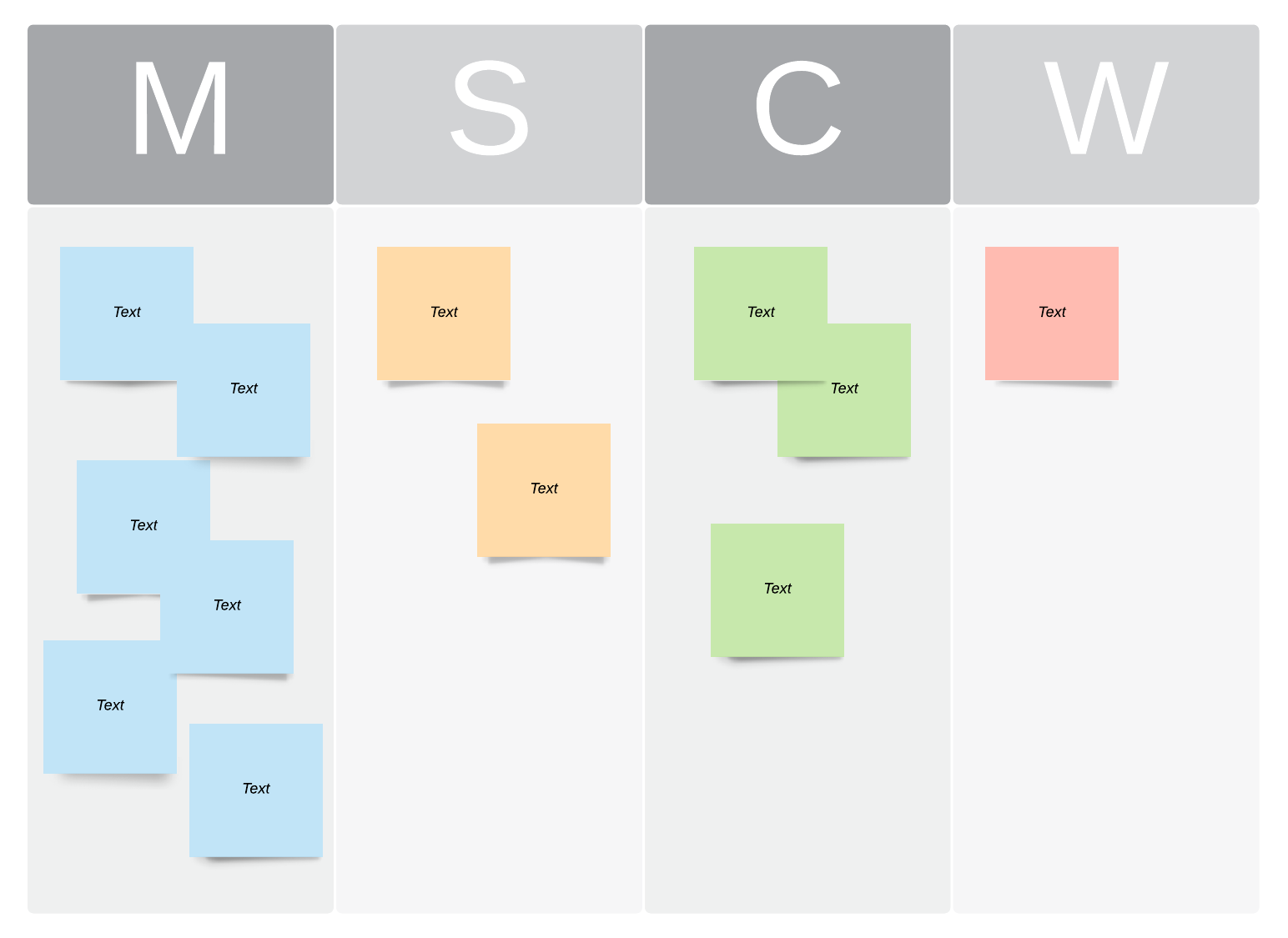The Moscow Prioritization Method is a structured, logical approach to the selection of projects using several criteria. It was developed in 2004 by Leenknegt et al. at the University of Eindhoven and Delft University of Technology within an EU-funded research program called ‘Modeling for Innovation’.
It has been compared with other methods such as Pugh Concept Selection Matrix, AHP (Analytic Hierarchy Process), Kepner/Tregoe Model, UTAUT/SQWUREL Model etc. One main difference is the linking of the criteria to one another.
The elements for discussion are formulated in general problem statements; these typically concern activities which need to be performed or changes that need to be made. Each statement is then broken down into more specific sub-problems, becoming more and more detailed until the actual problems are defined. Then each problem is analyzed through several perspectives (for instance financial, legal etc.). Based on this analysis, some groups of problems can be eliminated because they do not seem relevant or feasible enough.
This allows for a quick first round assessment on the relevance of all problems without getting too involved with them individually at this stage. At last, each remaining problem is assessed using five criteria: Time-Scale, Costs, Business-Criticality, Policy-Status and more. By following these steps, problems can be reduced to a manageable number of about four to six DSDM projects per year. In the end, only those projects will go ahead which have been assigned to a specific project manager on a permanent basis by the strategy board or steering committee.
The dsdm moscow prioritization method is a five question survey that ranks every project from 1 to 5, where each number represents the likelihood that a specific project will generate at least one million dollars of revenue.
How do you prioritize projects?
Prioritizing key business processes and identifying critical success factors for achieving these.
Using an analytic tool such as rafiki or moscow to identify important relationships between multiple variables.
Decision making under complete information. DSDM uses multi-criteria decision making techniques to make priority decisions when there may be more than one option with merit, and when detailed data required to calculate a value score for each option is not available.
What is Moscow?
The moscow acronym is a prioritization method that involves decision makers and their stakeholders in an interactive prioritization process which helps them come to consensus on the relative priority of specific projects within a portfolio. It’s based on the research results showing that experts tend to agree more often than would be expected by chance if asked to prioritize using pairwise comparisons, but experts may disagree when forced to choose among more than two alternatives; this phenomena is called inconsistency or intransitivity. This methodology attempts to give stakeholders and decision-makers (subject matter experts) a sense of ownership in decisions and can help avoid conflict between managers and individual contributors.
How does Moscow work?
For Moscow, the topic of prioritization is phrased as follows: “If you had the ability to prioritize the projects in this portfolio, which ones would be your first, second and third choices?” The group is asked to rank each project from 1-20.
The moscow method works by generating a priority matrix that shows how many people ranked each project first, second or third. This process results in three priority scores for each project – a first choice score, a second choice score and a third choice score. Projects are then sorted based on their average scores. Typically at least six participants are required to provide adequate data points for mosco’s calculations.
Moscow analysis can also help managers plan realistic schedules that take into account the number of resources available. For example, if completing a project requires three team members working full time on the project for six months, moscow will tell you that it is unwise to suggest eight people working half-time for 12 months on the same assignment because moscow’s priority scores would indicate that this assignment should be given to three individuals who can work on it full time for at least six months.
A key feature of moscow is the notion of efficient frontier, which helps determine an organization’s optimum project assignments. The efficient frontier concept allows mosco to identify those employees with the highest moscow scores and reassign projects among them. moscow calculates efficient frontiers by assessing all possible combinations of resources against each other for compatibility and then ranks these combinations based on priority score. For example, if one resource has a high moscow value (i.e., it is efficient), but another has a low moscow value (i.e., it is not efficient), mosco will assign the first resource to his or her top-priority task(s) until no additional moscow gains can be made without breaking another moscow rule. moscow will assign the second resource to the project with the lowest mosco score that is compatible with this resource until no further moscow gains are possible. moscows are then reassigned to other projects in the same manner.
The method of Dynamic Staffing for Decision Making (DSDM) was developed by Donald C. Doran, who recognized that static approaches were unable to use all available information when carrying out decisions regarding human resource allocation. Static allocation methods used in organizations have much in common with techniques employed by economists over a century ago.




